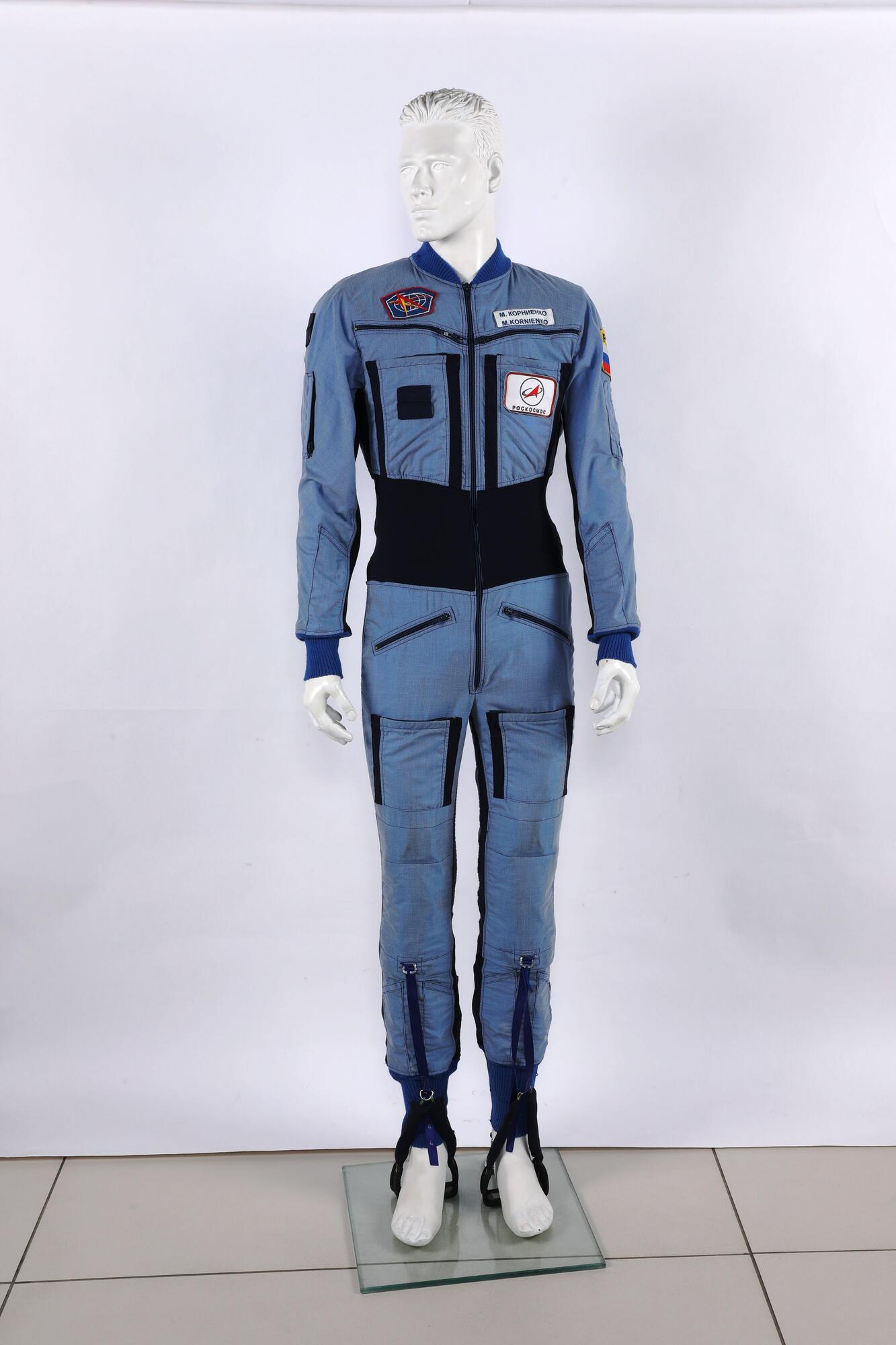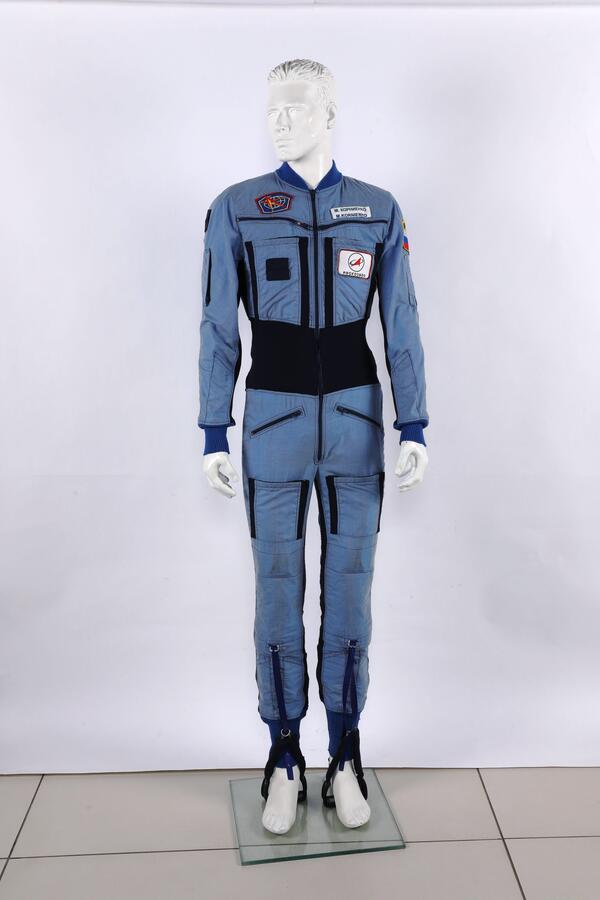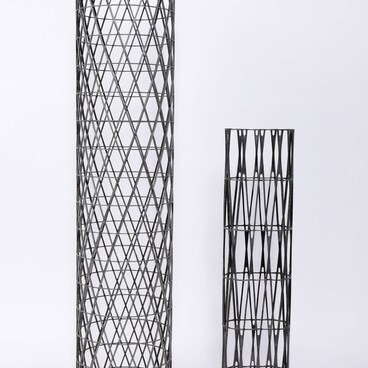This protective suit, with the rather comical name Pingvin (or ‘Penguin’) is designed to minimize the negative effects of a zero-gravity environment during long flights. It is a resistance method for preventing muscle wasting. This particular suit belonged to the Russian cosmonaut Mikhail Kornienko, who, together with Scott Kelley, made the longest flight in the history of the International Space Station — 340 days (March 27, 2015 to March 2, 2016). The absolute record for the longest time spent in a space station is held by the Russian cosmonaut Valery Polyakov, who spent almost 438 days in the Mir space station, from January 8, 1994 to March 22, 1995. The Pingvin suit is a jumpsuit made of knotted material fitted with elastic straps, which put vertical pressure on the cosmonaut’s locomotor and muscular-skeletal systems. It has a wide belt and trouser stripes made of an elastic material. The ends of the boots are fitted with weights to exercise the calf muscles. The tightness of the resistance straps can be regulated using special buckles. The force exerted by the suit can be regulated, and ranges from 0 to 40 kg. Standing upright in the suit requires a certain amount of effort, which is essential in order for the cosmonaut to keep their muscles in good shape. This provides a partial substitute for the resistance, which the cosmonauts experience in normal conditions when subject to the Earth’s gravitational field. The first flights in orbit lasted just a few days, and therefore the cosmonauts were not fully exposed to the negative effects of living in zero-gravity conditions. But as the flights increased in duration, the dangerous consequences became evident.
From the beginning of the 1970s onwards, exercise equipment, Chibis vacuum device and the Pingvin protective suit were used on Soviet space stations. The Pingvin was designed to be worn for hours at a time — cosmonauts could wear it to do exercise and could sleep in it. On the Salyut and Mir space stations these suits were worn every day, and most of the time — up to 16 hours a day. The Pingvin suit is still regularly worn on the International Space Station, but not as much as in the past. The experience from development and using the Pingvin suit in orbit has also resulted in practical benefits on Earth. It formed the basis for the Regent and Adeli suits, which are used for the rehabilitation of patients with infantile cerebral palsy and head injuries, and those recovering from strokes. These suits create an artificial load on the muscles, help to normalize nervous impulses, promote the development of connections between the muscles and joints, and can even help restore the function of speech.
From the beginning of the 1970s onwards, exercise equipment, Chibis vacuum device and the Pingvin protective suit were used on Soviet space stations. The Pingvin was designed to be worn for hours at a time — cosmonauts could wear it to do exercise and could sleep in it. On the Salyut and Mir space stations these suits were worn every day, and most of the time — up to 16 hours a day. The Pingvin suit is still regularly worn on the International Space Station, but not as much as in the past. The experience from development and using the Pingvin suit in orbit has also resulted in practical benefits on Earth. It formed the basis for the Regent and Adeli suits, which are used for the rehabilitation of patients with infantile cerebral palsy and head injuries, and those recovering from strokes. These suits create an artificial load on the muscles, help to normalize nervous impulses, promote the development of connections between the muscles and joints, and can even help restore the function of speech.



